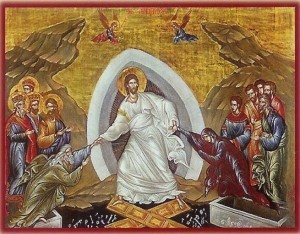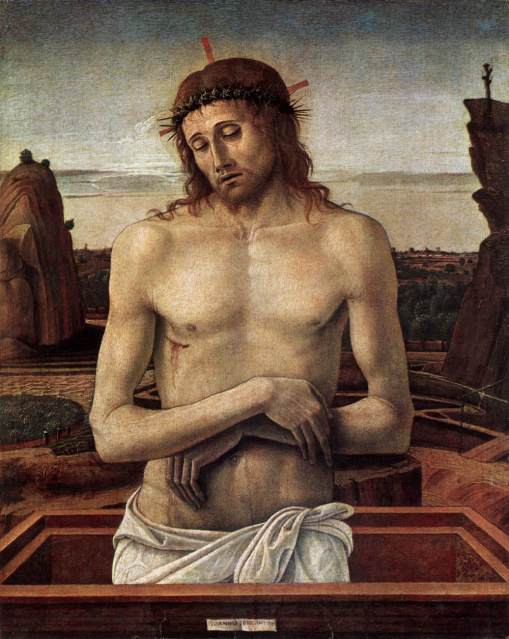The Orthodox have always emphasized that the purpose of the Incarnation, Passion, and Resurrection is theosis, the divinization of man, man’s entry into the processions of the Trinity.
From an Orthodox deacon:
we can see the Christ standing on the gates of hell in the shape of the cross. The cross is meant to show us how the chains and locks were destroyed and why the doors are now open.
Notice that the Savior in this icon does not bear the wounds of His passion. This seems to indicate that it is the second person of the Trinity in His divine nature liberating Adam and Eve in all His regal power and glory.
The two figures in the Anastasis that Jesus is pulling out of the sarcophagi are Adam and Eve. It is clear that His appearance is sudden and explosive, which is illustrated through the distorted look of their bodies and faces. Notice that His knees are bent and is pulling them upwards to Himself and his mandorla.
The three figures form a perfect equilateral triangle and are seen pulled into the space. In many other renditions of this icon, the Savior is seen freeing our first parents from enslavement to sin and thus death. Here He seems to be pulling humanity (represented in Adam and Eve) into the Most Holy Trinity. This is consistent with the Holy Writ that even in His liberation of Sheol He wants us to mysteriously participate in the eternal exchange of persons which is the Trinity.




